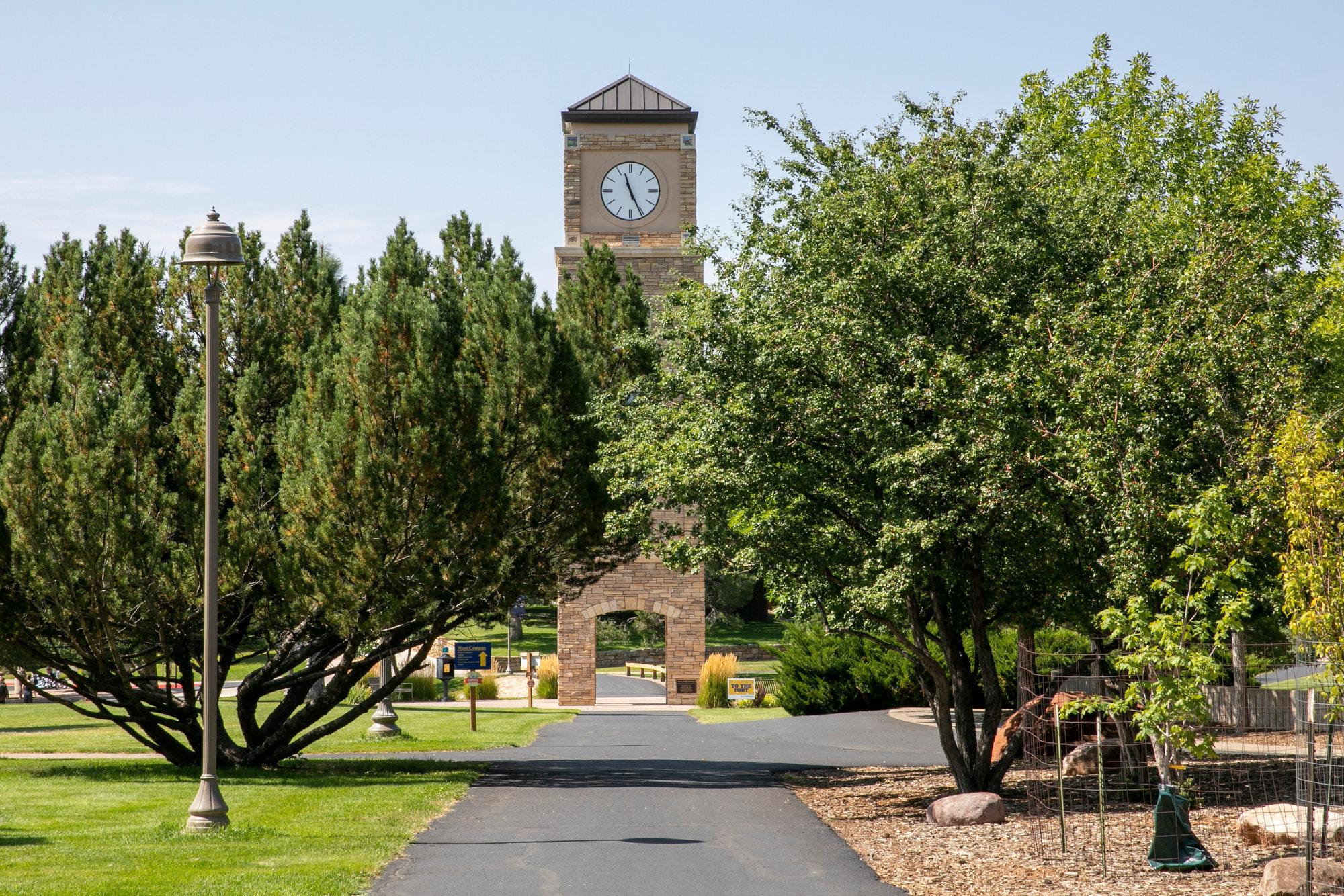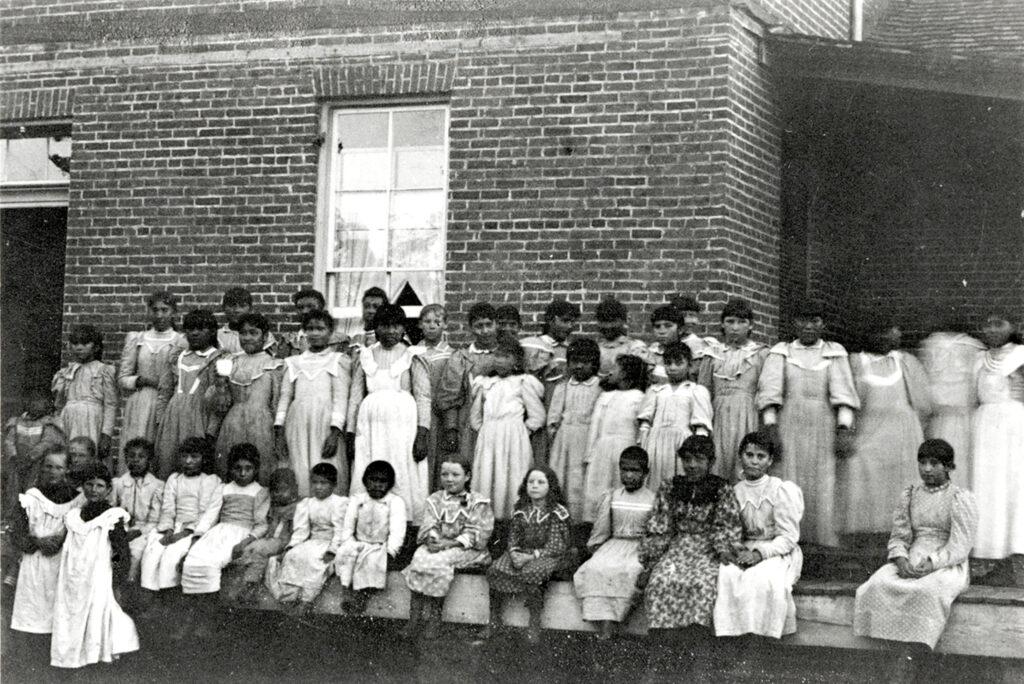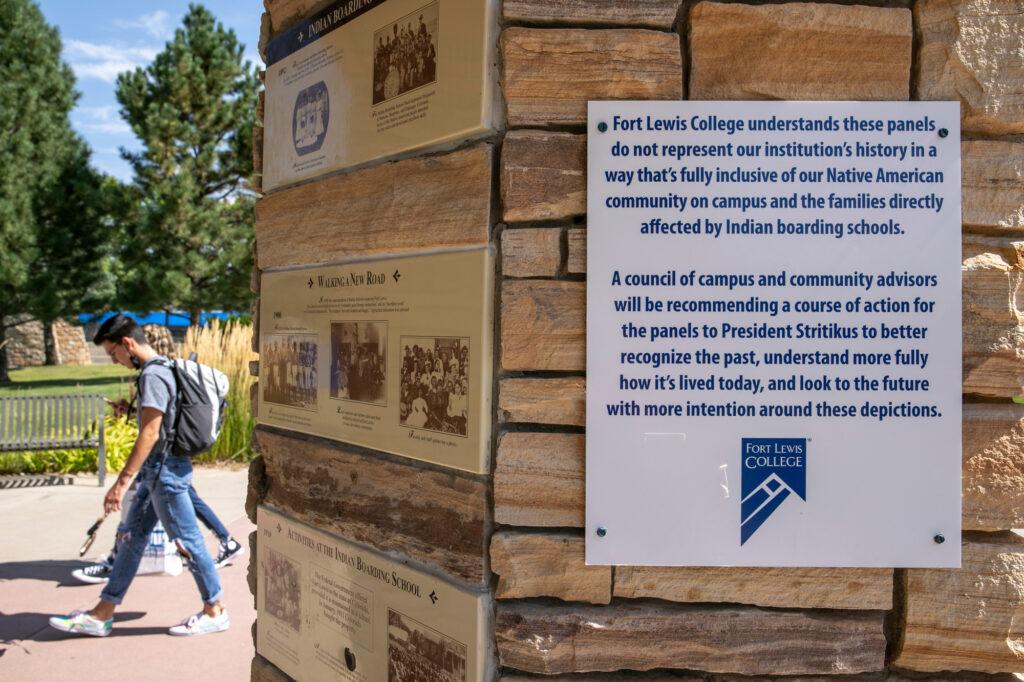
Fort Lewis College in Durango started its reconciliation process in 2019 with the goal of owning its history as a former federal boarding school where Indigenous students were forcefully assimilated into American society. It’s spent the last four years trying to mend bridges with the tribal entities it harmed.
Part of the process has involved uncovering the college’s true history and taking down campus installations that improperly depict its past. Now, thanks to a first-of-its-kind state investigation into Colorado’s boarding schools, leaders at Fort Lewis College have an even clearer picture of its past.
The state report outlined the history of the Fort Lewis Indian Boarding School between 1892 and 1911. While the report acknowledges many of the original records from Fort Lewis have been lost or damaged beyond use, it was able to cobble together a loose picture of the lives, health and abuses suffered by children forced to attend the school.
For the first time ever, the report also used archaeological technology to identify the number of bodies buried at the Fort Lewis Indian Boarding School’s cemetery.
“The state and Fort Lewis, I think, had never officially acknowledged the number of deaths that had happened at the boarding school,” Fort Lewis College President Tom Stritikus said. “We had been aware that there were deaths at Fort Lewis in our own Center for Southwest Studies. We had some materials, but those were incomplete. So seeing the full number of deaths of 31, I think, was important for us in terms of understanding with a real clear view of the past so that we can move forward.”
At Fort Lewis, nearly half of the current student population identifies as Indigenous. With the report out, the school’s attention is on figuring out how to offer time and space for students to process the information and heal. Heather Shotton, the vice president for diversity affairs at the college, said it plans to offer various types of support, as healing will look different for everyone.

“We have found in past experience that the opportunity for students to be in community is often the most healing for our campus,” Shotton said. “So we've created opportunities to foster community and just to support students. And I think moving forward, it's how we continue to focus on student wellness and wellbeing through a number of our programs, not just our counseling center, but through our wellness director and how we are helping students to maintain that balance.”
Shotton added that healing doesn’t have to be strictly mental — it can also mean making amends through pedagogy. She sees this report as a reason to double down on efforts to preserve and teach Indigenous languages.
“We know that one of the impacts of the federal Indian boarding school system was the loss of tribal languages because that was an intent of the boarding school system,” she said. “And so in ways that we can contribute to language revitalization, whether it be through academic programs, community programs or whatever that might look like with our students. If we can focus on aspects of healing and wellness around language, culture, Indigenous knowledge, those are important aspects of healing for us, too.”
Fort Lewis also plans to reach out to various tribal entities to discuss the report’s findings and how it can best serve those communities. That includes the Navajo Nation. The History Colorado report found that a large majority of students who attended the boarding school at Fort Lewis were Navajo.

While it cannot be confirmed, the report also theorized that the large number of Navajo students could be inflated due to superintendents categorizing Mexican and other non-Native students as Navajo in an attempt to obtain more funding. Stritikus said that possibility was new to him, and Fort Lewis may slightly alter its reconciliation framework to include more communities.
“We are eager to connect with communities that may have been impacted, and also make that part of our story, our current story,” he said. “Right now, 15 percent of our students are Latinx. And so having that story, that history, be part of the forward-looking movement is also important to us.”
Fort Lewis College enrolls the largest number of Indigenous students in Colorado by far. The state hopes other universities begin to follow suit, following the passage of a 2021 law that offers in-state tuition classification to students who are members of an Indigenous tribe with historical ties to Colorado.
Related stories
- A year into its investigation into Indian boarding schools, History Colorado begins to lay out steps toward reconciliation
- As the U.S. confronts its past harm to Indigenous people, a new movement is helping Native students take back their education
- After Years Of Calls To Correct Whitewashed History, Fort Lewis College Is Owning Up To Its Past As An Indian Boarding School









